Typically, the most famous sharks are the sensationalized ”man-eaters” like the great white (Carcharodon carcharias) or tiger shark (Galeocerdo cuvier). Instead, our focus will shift to a slow-moving filter-feeder, the whale shark (Rhincodon typus). The whale shark belongs to the order of Orectolobiformes, also known as ”carpet sharks”, and is the sole extant member of its family and genus. The whale shark inhabits all of the tropical and warm waters of the world, occupying both the coasts and the open ocean. The overwhelming majority of whale sharks belong to the Indo-Pacific population. The whale shark is undoubtedly the largest extant fish and largest extant species that’s not a whale. However, a precise understanding of its growth is unclear due to the lack of published data on physically mature specimens, especially females. With the data available, both males and females appear to achieve sexual maturity at 8-9 meters, with most males ceasing growth at this stage. Females grow slower than males but physically mature at a larger size, likely exceeding 12 meters after many years. Experts generally accept the multiple records of 18-meter specimens as the maximum length for this species, though very few achieve this size. Mass is even less documented, though an alleged ”20-meter” specimen was estimated to have weighed 34 tonnes. The largest one scientifically validated was 12.65 meters and over 21 tonnes. With these metrics in mind, the largest whale sharks are comparable to the other large fish in Earth’s history, such as Leedsichthys problematicus and Otodus megalodon. Despite their large size, whale sharks are currently kept in aquaria across East Asia and the Georgia Aquarium in Atlanta. Whale sharks are very sensitive to anthropogenic influences and are classified as ”Endangered” by the IUCN. However, no robust estimate for the global population exists. Whale sharks are named such, not just for their large size, but shared ecology with baleen whales as filter-feeders. This species eats copepods, krill, fish eggs, larvae, and small fish. Whale sharks generally lack predators but confirmed records exist for juveniles falling victim to large sharks and an adult killed by killer whales (Orcinus orca).
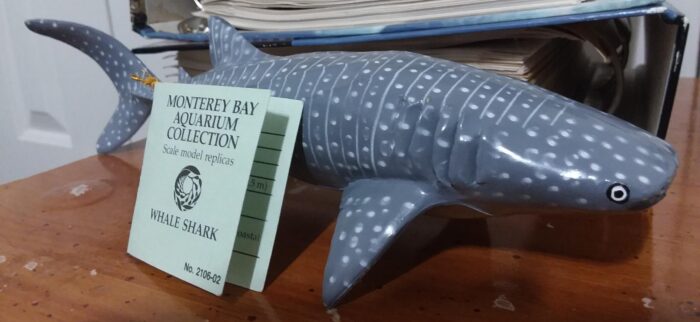
Today, this blog makes another return to Safari Ltd.’s Monterey Bay Aquarium Collection. For the seventh review, I’ll be covering the whale shark, which was part of the figures originally released in 1992. For the time, these figures were advertised not as mere toys, but museum-quality models that represented the highest quality. After nearly 30 years later, that will be put to the test.

The MBA whale shark measures about 26.0 centimeters in length when accounting for the pose. At the marketed scale of 1:40, this figure corresponds to a 10.4-meter specimen. If we accept the 18-meter metric as the maximum length for this animal, then this figure can work from the 1:30-1:69 range for representing a female. The figure is a fair size but is dwarfed by some of the larger figures in this set, such as the 36.2-centimeter humpback whale. There may be some size variation between different casts of the figures produced over the years, the one I’m using for this review is one of the older variants, possibly the original. I’m led to believe newer casts are slightly smaller.
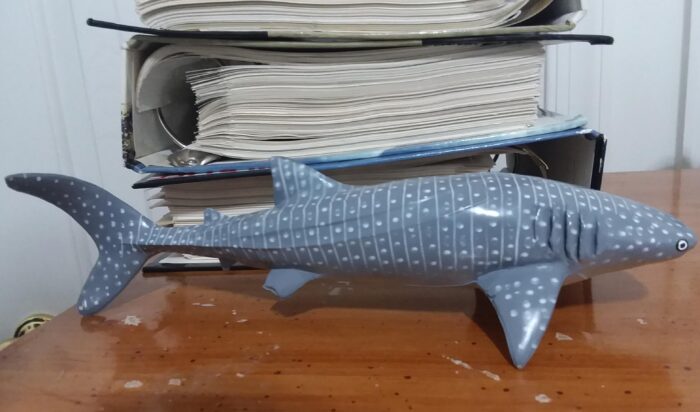
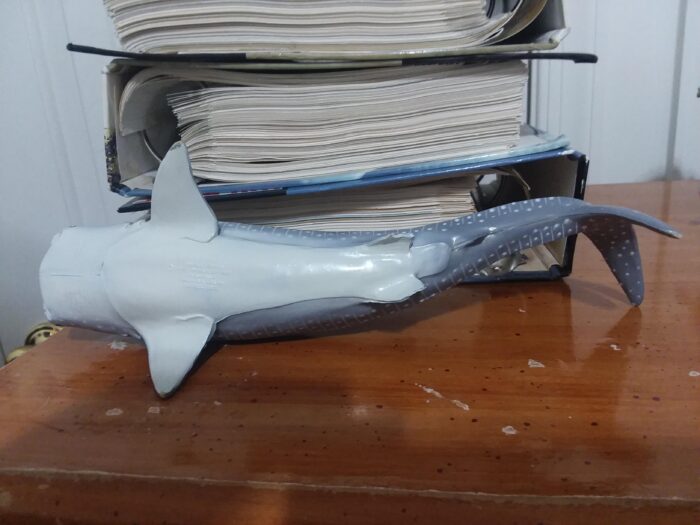
From what I can tell, the sculpt is pretty realistic, especially when considering the figure’s age. The outline of the body is correct along with the positioning and shape of the fins. The figure also features prominent ridges on the side of the body. My only criticism is how conspicuous the seams are, which is a common issue with the earlier casts from the MBA line. I’d imagine this isn’t as much of a problem on a brand new version.

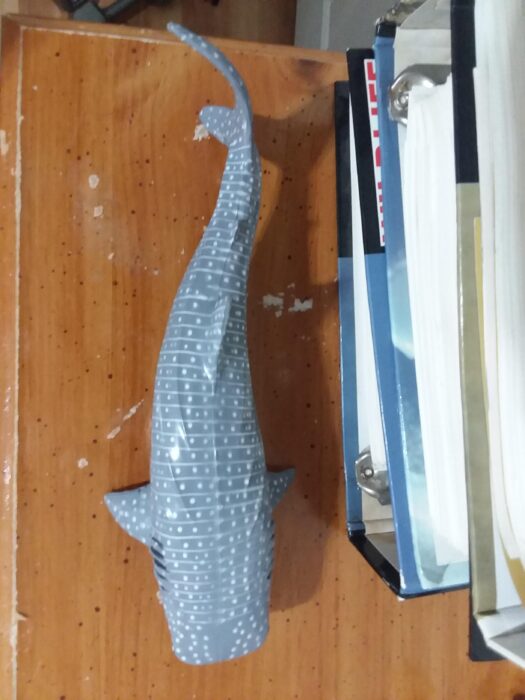
Whale sharks possess a unique coloration, boasting an assortment of stripes and spots throughout the body. It seems this pattern is fairly depicted in the MBA figure against a countershaded grayish-blue body. I do have a minor complaint. On most photos of real whale sharks I can find, the pattern of the stripes is disrupted at the dorsal fin. In this variant of the MBA figure, the stripes run perfectly along the dorsal fin. Another issue is that the eyes don’t look very realistic. Even when viewing the newest paintjob for this figure, I wouldn’t say it’s as intricate as the Papo whale shark. Nonetheless, it’s still a solid attempt at such a complex coloration.
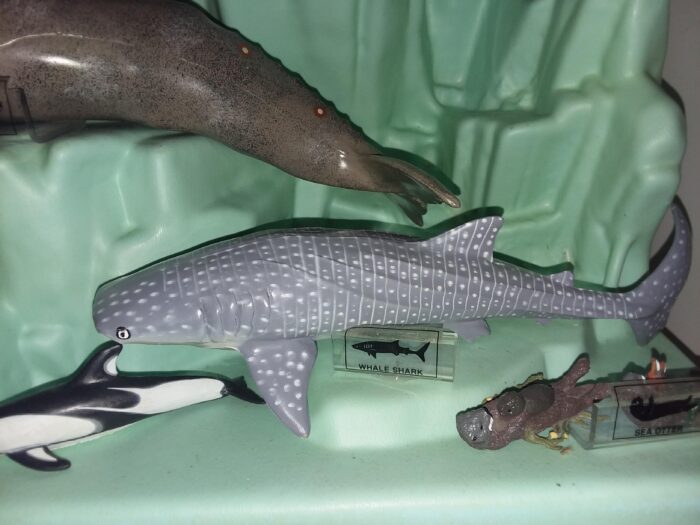
To no surprise, it’s my verdict that the MBA whale shark remains a great figure, even after three decades. It should say something that only a few figures could be considered significantly more realistic and detailed after 30 years, especially when restricting the pool to figures of the same scale. I would say the Papo figure has recently surpassed the MBA whale shark. However, few will be left disappointed by choosing from the Monterey Bay Aquarium Collection. Luckily, this figure is among the 14 figures still in production, so those interested in this figure will not have to resort to secondhand sellers.
Disclaimer: links to Ebay and Amazon on the AnimalToyBlog are affiliate links, so we make a small commission if you use them. Thanks for supporting us!




A wonderful sculpt, but oof…those eyes lol. I know, many of the earlier Safari figures have exaggerated paint jobs around the eyes!
Yeah, I really wish they had fixed that in the newer edition, as they did for the gray whale calf before its retirement.
Beautiful figure but yeah, those eyes. I don’t have a whale shark yet and right now I’m leaning towards Papo’s.